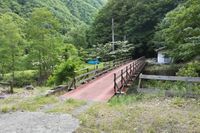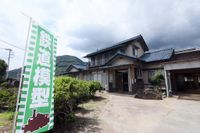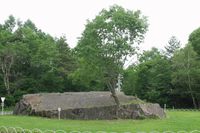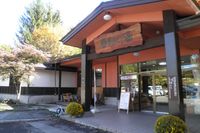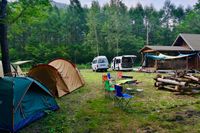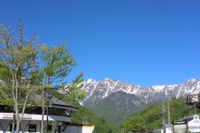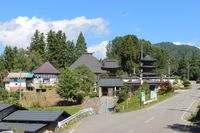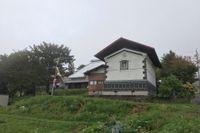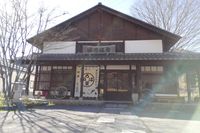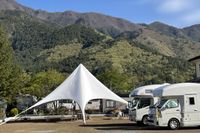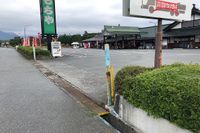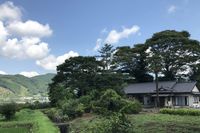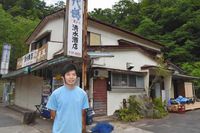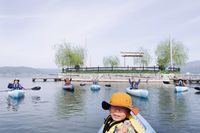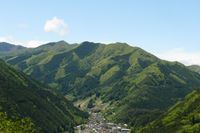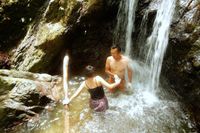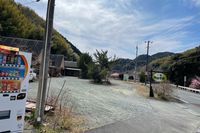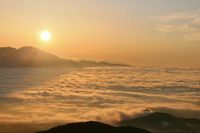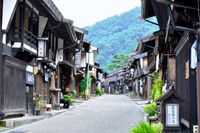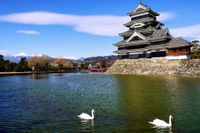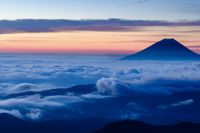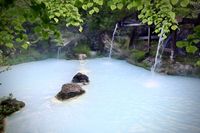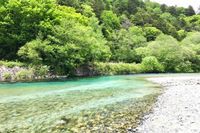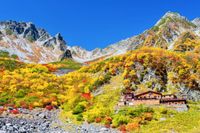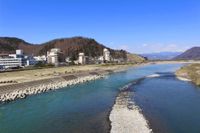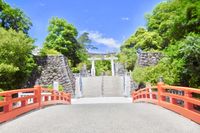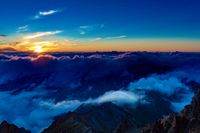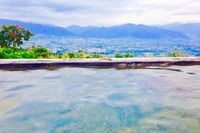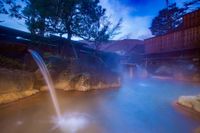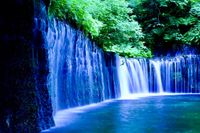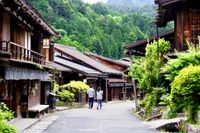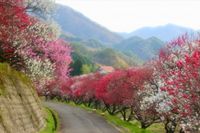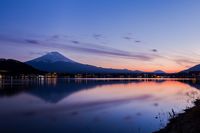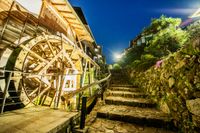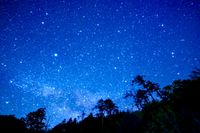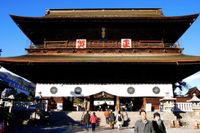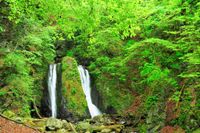Suwa Taisha Shrine
長野県/諏訪市

Description
This is a traditional shrine whose construction date is unknown. It houses two Gods known as Takeminakata no Kami and Yasakatome no Kami and 25,000 companies in Japan are associated with the shrine. It has been long known and revered as a war shrine, and where Sakanoue no Tamuramaro prayed for victory during the conquering of Ezo district. There are four halls which are separated by Lake Suwa, with the upper area of Honmiya and Maemiya on one side, and Akimiya and Harumiya on the other.
Homepage
Address
Nearby Car Night Spots
(Power supply available/facilities for rain) Apples bonfire station Fruit Garden Kitazawa
¥4,000〜
/ per nightNagano Oshima, Matsukawacho, Shimoina-gun
4.9
(21)Railway Guest House Tetsunoya (hot spring available)
¥3,000〜
/ per nightYamanashi Shizume, Kasugai-cho, Fuefuki City
5.0
(15)Omachi Hot Spring "Yukemuri Estate: Yakushi no Yu"
¥500〜
/ per nightNagano Ken Taira, Omachi Shi
4.1
(27)A luxurious Niigami Pass camping car spot where you can occupy a 500 tsubo lot by yourself
¥150,000〜
/ per night群馬県 吾妻郡長野原町北軽井沢
5.0
(2)Kawaguchiko Yatai Village
¥2,500〜
/ per nightYamanashi Kawaguchi, Fujikawaguchiko Town, Minamitsuru District
4.5
(58)Nearby Activities
【Only foreigners】 Experience local life in Nagano
¥5,000〜
/ per personNagano Takehusa, Shinshu-shinmachi, Nagano city,
3.0
(0)【Only Foriegn Visitors】 International exchange with handmade udon!
¥5,000〜
/ per personNagano Prefecture Shinonoi Utabi, Nagano City
3.0
(0)【Only Foreign Visitors】Takoyaki Party with Locals
¥5,000〜
/ per personNagano Prefecture Wakaho Kawada, Nagano City
3.0
(0)【Only Foreign Visitors】International Exchange with Takoyaki and Okonomiyaki
¥5,000〜
/ per personNagano Prefecture Wakasato, Nagano City
3.0
(0)【Only Foreign Visitors】Local Meetup in Nagano City
¥5,000〜
/ per personNagano Prefecture Hirabayashi, Nagano City
3.0
(0)【Only Foreign Visitors】Original Miso Ramen Party
¥5,000〜
/ per personNagano Prefecture Minowa, Nagano City
3.0
(0)Ranking Stations
(Bonfire BBQ) Chita Mihama Noma Beach Station
¥3,500〜
/ per nightAichi Noma, Mihamacho, Chita County
4.7
(42)Vanlife BASE | 45 min. from Narita Airport / Perfect for campervan travel/A seaside town rich in nature/Japanese countryside town/welcome traveler
¥7,000〜
/ per nightChiba Koseki, Kujukuri-machi, Sambu-gun
5.0
(61)Shin Meishin Suzuka PA (inbound) RV Station Suzuka * With Power!
¥2,200〜
/ per nightMie Yamamotocho, Suzuka-shi
4.3
(156)Nearby Drive Spots
Utsukushigahara Highlands
This is a plateau situated in central Nagano, with an altitude of 2,000 meters. Beyond the Venus line highway renowned for its views, this hidden area awaits. Here visitors can see a 360 degree panoramic view of the northern and southern alps, Sengen mountain, and Mount Fuji. The area is an ideal photo spot for its otherworldly starscapes above and cloud scapes below.
Narai-Juku
This is the 34th town inn which is located on the Nakasendo road, which links Tokyo (Edo at the time) and Kyoto, built during the Sengoku era(1467-1600). Situated just past the Torii gate in a perilous spot, the inn town became known as the "Narai of 1000 hotels" by many travelers. During the Edo period(1603-1868), the woodwork industry became prolific in the area with wooden crafts and lacquering, and is popular as a souvenir spot today.
Matsumoto Castle
This is a castle build by Ogasawara clan in 1504. It is famous as one of Japan's only 12 castle towers and is one of 5 which has been designated as a national treasure by the Japanese government. The castle was taken into ownership by Ishikawa Kagumasa in 1590, and it is said that he painted the castle jet black to express loyalty to the castle lord, and became famously known as the "Crow castle".
Mount Kitadake
This is Japan's second tallest mountain at 3,193 meters high in the southern part of Yamanashi prefecture. The mountain is known as mount Shirane, (white topped mountain) due to the snow at the mountain caps. There is also a 600 meter rock wall known as "Kita-mine buttress". Towards the upper area of the mountain, there are splendid views of Mount Fuji with a sea of clouds below, for which this mountain is very popular. ※北岳より夜明けの富士山を望む © TAKAO_Tsushimaクリエイティブコモンズライセンス(表示4.0 国際)https://creativecommons.org/licenses/by/4.0/
Shirahone Onsen
This is a hidden away hot spring in the vicinity of Kamikochi in the west part of Nagano prefecture. It has always been well known as a place of healing, and it is said that one will not catch a cold if one enters the milky white water for three days. It is a secluded hot spring town with a quiet atmosphere, with several inns and places to eat around the local area.
Kamikochi
This is a scenic spot with an altitude of 1500 m in the southern part of the Hida Mountain Range. It has many sightseeing spots such as Azusa RiverKappa BridgeMyojin PondTakesawa WetlandsTashiro Pond. As there are only a few such plains spread out in Japan to this extent, many tourists flock to this area to see the rare scenery. The area is also the habitat of the Japanese monkey, Char Fish, and Genji firefly.
Karasawa Curl
This is the largest glacier valley in Japan at the southern part of the Hida mountain range. There is a stunning view between Mount Okuhogatake and Mount Maehogatake due to their height difference of about 1,000 meters. The area has become popular for autumn leaf viewing in recent years, and the trees, known for their "three stage" autumn leaves offer an interesting contrast to the surrounding rocky area.
Togurakami Yamada Onsen
This is an Onsen located on the river bed of Chikuma River. It opened during the Meiji era(1858-1912), and was known as a place of devotion towards the Zenkoji Temple, as well as a place of healing for wounded and sick soldiers during the war. A total of 150 geisha registered to this onsen, and also has the unique characteristic of being an onsen constructed on a base of a shooting range.
Takeda Shrine
This is a shrine that was built by Takeda Shrine Association in 1919, where the warrior Takeda Shingen is deified as a shrine God. It is settled on the grounds of where the lodging house known as "Tutujigasaki Yakata", built by Takeda Nobutora. After the Russo-Japanese war in 1904, peopled wished for warriors and soldiers to be enshrined in the temple, which is why Takeda Shingen, a great warrior during the Sengoku era(1467-1600), was enshrined here, and is revered as the "Victorious God" even today.
Mount Yarigatake
Located at the southern part of the Hida mountain range, this is Japan's 5th tallest mountain at 3,180 meters. As the name suggests, the mountain has an unusual shape resembling a spear that is being cast to heaven. This has earned it the nickname of "Japan's matterhorn". The sunrise and sunset views with the sea of clouds below captures the hearts of many climbers.
Hottarakashi Onsen
This is an Onsen in Yamanashi prefecture. From the bathing area, you can see the Kofu basin below, and Mount Fuji is visible on a clear day. The onsen became well known as a place that opened early in the morning and ideal for viewing the sunrise. The name comes from the fact that there are no special advertisements or services provided, but is a place simply to have fun.
Oku Hida Onsen
This is a hot spring deep in Oku Hida. It is situated in the northern alps, and was admired by Shingen Takeda during the Sengoku era(1467-1600), as an onsen with the third most plentiful amount of spring water. The onsen is unique in that there is a free communal bath area with many different types of baths.
Shiraito Falls
This is a waterfall situated in Karuizawa. As water spouts up through the rocks, this waterfall looks attractive in all types of weather. The name derives from the fact that the water flowing down looks like white and silken threads.
Tsumago-Juku
This is the 42nd town inn which is located on the Nakasendo road, which links Tokyo (Edo at the time) and Kyoto, built during the Sengoku era(1467-1600). It has appeared in Ukiyo-e art and Utagawa Hiroshige, and is one of Japan's few traditional villages whose buildings are preserved today. Along with Magome-Juku it is one of the flagship tourist destinations of Kiso road.
Hirugami Onsen
This is an Onsen in Achi Village, and was discovered in 1973 when a tunnel was being built in this area. Near the Achi River, there is an onsen that is beautifully integrated into the natural landscape. It is also possible to view amazing starscapes on a clear night. Between mid April and early May, the peach blossoms also come into bloom.
Lake Shoji
This is one of the five lakes of Mount Fuji, and is included as a world heritage site along with Mt Fuji itself. The area is popular for various famous photo spots of Mount Fuji, such as the "Double Mount Fuji" where it can be captured with its mirror image reflected in the water, as well as where Mount Fuji appears to overlap with the smaller Mount Muroyama.
Magome-Juku
This is the 43rd town inn which is located on the Nakasendo road, which links Tokyo (Edo at the time) and Kyoto, built during the Sengoku era(1467-1600). It has the traditional cobbled stone paths that were present originally, and is one of Japan's few traditional villages whose buildings are preserved today. Along with Tsumagoi-Juku it is one of the flagship tourist destinations of Kiso road.
Achi Village
This is a village situated in the southern part of Nagano prefecture. With its ideal altitude, clear area and surrounding mountains and stunning starscapes and cloud scapes below, the area has been recognized by the Japanese ministry of environment as the best star viewing area in Japan. Peach flowers also bloom in this area from mid April to the beginning of May.
Zenkoji Temple
This is a non-sectarian temple that was built in 644 AD. The temple was built to revere the oldest Buddha known as Ikko Sanzon Amida Nyorai, and numerous priests and monks visited this temple, including Shinran and Ippen. It was the scene of the battle between the warriors Takeda Shingen and Uesugi Kenshin, but its restoration was ordered by Tokugawa Ieyasu, and is known even today as a famous place where all should visit at least once in their lifetime.
Kosuge Odaki Falls
Follow a 15-minute river trail deep into a thicket of shioji trees until it reveals a majestic rock, where the rapid of Tama River breaks in half and forms an absolutely breathtaking twin waterfall display. Kosuge Odaki Falls truly is a sight to behold and a favorite of many photographers.

